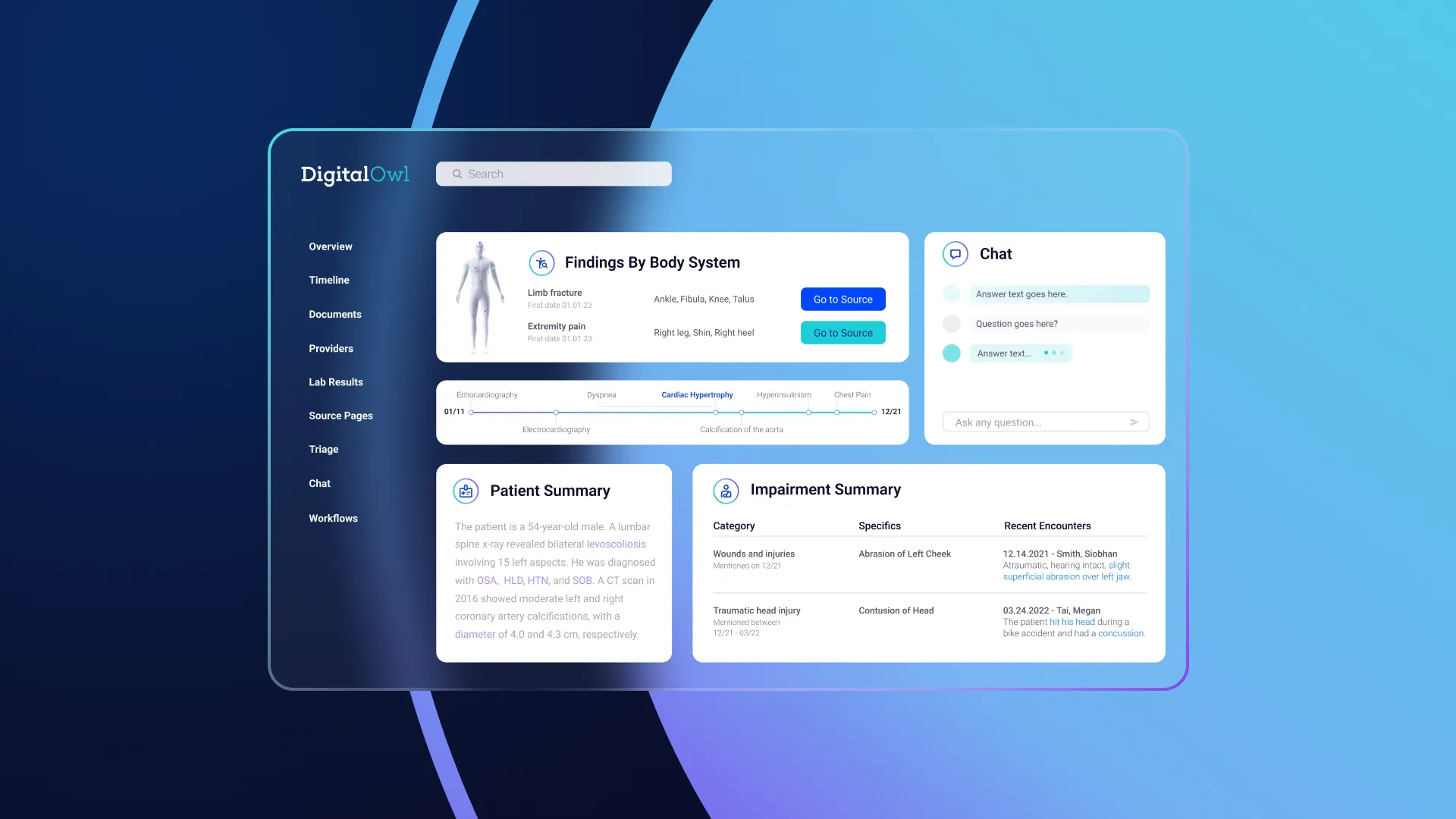
DigitalOwl Medical Chronology AI: Complete Buyer's Guide
Automate medical record processing and chronology creation
DigitalOwl Medical Chronology AI is a specialized artificial intelligence platform designed to automate medical record processing and chronology creation for legal professionals handling medical-related cases.
Market Position & Maturity
Market Standing
DigitalOwl positions itself within the rapidly expanding legal AI market—where adoption has surged from 11% to 30% in 2024 [9]—as a focused solution addressing one of law firms' most time-intensive administrative challenges.
Company Maturity
The vendor operates in a high-value market segment with documented demand for medical chronology automation.
Industry Recognition
The medical chronology AI segment benefits from broader legal AI market validation, with larger firms (100+ attorneys) leading at 46% adoption [9] and particular strength in document-intensive practices like personal injury (37%) and civil litigation (36%) [8].
Longevity Assessment
Without verified funding, revenue, or customer growth data, organizations should assess DigitalOwl's stability through direct vendor evaluation and customer reference verification.
Proof of Capabilities
Market Validation
The broader medical chronology AI market provides substantial proof of concept, with documented implementations achieving 72% time savings on medical record reviews [4][15] and 75-85% time reduction in chronology creation [2][16].
AI Technology
DigitalOwl Medical Chronology AI employs natural language processing algorithms specifically designed to extract and organize medical data from complex records.
Architecture
The system's architecture appears designed for automated medical record processing through AI-powered categorization and timeline generation.
Primary Competitors
Mary Technology offers verified 72% time savings with GDPR-compliant processing and Australian compliance features [14][29].
Competitive Advantages
DigitalOwl's focused approach on medical chronology aligns with market trends toward verticalized solutions, as firms increasingly prefer specialized tools over horizontal platforms for complex legal workflows [1].
Market Positioning
The platform's specialization strategy positions it advantageously within the verticalization trend where tools focus on specific legal workflow integration rather than broad horizontal coverage.
Win/Loss Scenarios
DigitalOwl likely wins against generalized AI tools when medical specialization depth proves critical for accuracy and workflow efficiency.
Key Features

Pros & Cons
Use Cases
Featured In Articles
How We Researched This Guide
About This Guide: This comprehensive analysis is based on extensive competitive intelligence and real-world implementation data from leading AI vendors. StayModern updates this guide quarterly to reflect market developments and vendor performance changes.
36+ verified sources per analysis including official documentation, customer reviews, analyst reports, and industry publications.
- • Vendor documentation & whitepapers
- • Customer testimonials & case studies
- • Third-party analyst assessments
- • Industry benchmarking reports
Standardized assessment framework across 8 key dimensions for objective comparison.
- • Technology capabilities & architecture
- • Market position & customer evidence
- • Implementation experience & support
- • Pricing value & competitive position
Research is refreshed every 90 days to capture market changes and new vendor capabilities.
- • New product releases & features
- • Market positioning changes
- • Customer feedback integration
- • Competitive landscape shifts
Every claim is source-linked with direct citations to original materials for verification.
- • Clickable citation links
- • Original source attribution
- • Date stamps for currency
- • Quality score validation
Analysis follows systematic research protocols with consistent evaluation frameworks.
- • Standardized assessment criteria
- • Multi-source verification process
- • Consistent evaluation methodology
- • Quality assurance protocols
Buyer-focused analysis with transparent methodology and factual accuracy commitment.
- • Objective comparative analysis
- • Transparent research methodology
- • Factual accuracy commitment
- • Continuous quality improvement
Quality Commitment: If you find any inaccuracies in our analysis on this page, please contact us at research@staymodern.ai. We're committed to maintaining the highest standards of research integrity and will investigate and correct any issues promptly.